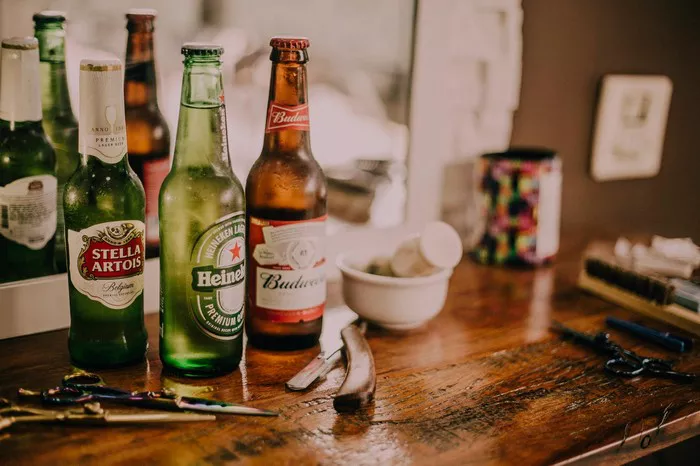Beer, a beloved beverage enjoyed across cultures for centuries, is known for its unique flavors, aromas, and, of course, its alcohol content. But what happens when beer is subjected to heat during the cooking process? Does cooking beer remove alcohol? In this article, we dive into the science behind alcohol evaporation, the impact of cooking on beer’s alcohol content, and whether your favorite beer-infused dishes are truly alcohol-free.
Understanding Alcohol Evaporation
To grasp the concept of whether cooking removes alcohol from beer, it’s crucial to understand the process of alcohol evaporation. Alcohol has a lower boiling point than water, which means that when heat is applied, alcohol will begin to evaporate at a lower temperature compared to water. This property is why alcohol can be distilled to create spirits with higher alcohol content. During cooking, as the temperature rises, alcohol molecules in a liquid, including beer, can transform into vapor and disperse into the air.
Cooking Methods and Alcohol Evaporation
The amount of alcohol that evaporates during cooking depends on various factors, including the cooking method, duration, and temperature. Here’s a closer look at how different cooking methods impact alcohol evaporation:
Boiling: Boiling beer can lead to a significant reduction in alcohol content over time. With prolonged exposure to high temperatures, a notable portion of the alcohol can evaporate, potentially leaving behind flavors but reducing the alcoholic strength.
Baking and Roasting: Cooking methods that involve baking or roasting at lower temperatures still result in some alcohol evaporation, though it might be less pronounced compared to boiling. The alcohol content reduction is likely to be milder.
Flambéing: Flambéing, which involves igniting alcohol briefly, can burn off a substantial portion of the alcohol content due to the high temperatures involved. However, the process is relatively quick, and not all alcohol will evaporate.
Simmering and Braising: Cooking methods that involve simmering or braising usually have a gentler impact on alcohol evaporation. While some alcohol may still evaporate over time, the reduction in alcohol content might be less compared to more intense cooking methods.
Measuring Alcohol Content After Cooking
The degree of alcohol evaporation during cooking varies based on factors such as cooking time, temperature, and the specific dish being prepared. While it’s challenging to provide an exact percentage of alcohol content remaining after cooking, several studies have attempted to estimate this.
A study published in the “Journal of the American Dietetic Association” found that after two and a half hours of cooking with heat, approximately 5 percent of the original alcohol content remained in the dish. After half an hour of simmering, around 35 percent of the alcohol was retained.
Another study conducted by the U.S. Department of Agriculture’s Nutrient Data Laboratory determined that the alcohol content remaining after various cooking methods was as follows: 85 percent after flambéing, 75 percent after adding alcohol to a boiling liquid and removing it from the heat, 45 percent after one hour of cooking, and 25 percent after two and a half hours of cooking.
Beer-Infused Dishes and Alcohol Content
Beer is often used as an ingredient in various culinary creations, adding unique flavors and nuances to dishes. When beer is incorporated into recipes and cooked, the alcohol content of the beer can decrease to varying degrees. However, it’s important to note that the amount of alcohol present in the original beer plays a significant role in the resulting alcohol content of the cooked dish.
For instance, if you’re using a high-alcohol beer, even after some evaporation, the dish might still contain a noticeable amount of alcohol. On the other hand, using a beer with lower alcohol content could result in a dish with minimal alcohol remaining.
Alcohol-Free Cooking Alternatives
If you’re looking to avoid alcohol altogether in your cooking, there are alternatives you can consider. Non-alcoholic beer is an option that can provide similar flavors without the alcohol content. Additionally, using broth, stock, or other liquids can help achieve the desired flavors in dishes without introducing alcohol.
Considerations for Sensitive Individuals
While the alcohol content in cooked dishes is typically reduced, it’s essential to be aware of potential concerns for individuals who are sensitive to alcohol. Some individuals, such as those in recovery from alcohol addiction or individuals who avoid alcohol for religious or personal reasons, may choose to avoid dishes prepared with alcohol-infused ingredients altogether. In such cases, it’s wise to communicate dietary preferences and concerns when dining out or attending social gatherings.
In Conclusion
Does cooking beer remove alcohol? The answer is yes, to varying degrees, depending on factors such as cooking method, temperature, and duration. While cooking can lead to a reduction in alcohol content, it’s unlikely that all the alcohol will completely evaporate, especially in dishes with shorter cooking times or milder temperatures. The resulting alcohol content in a cooked dish will depend on the original alcohol content of the beer used and the specific cooking process employed.
When experimenting with beer-infused dishes or considering alcohol-free alternatives, it’s important to keep in mind your personal preferences and any dietary considerations. Whether you’re looking to savor the rich flavors of beer-enhanced cuisine or seeking to avoid alcohol entirely, understanding the science behind alcohol evaporation during cooking can help you make informed choices in the kitchen.


